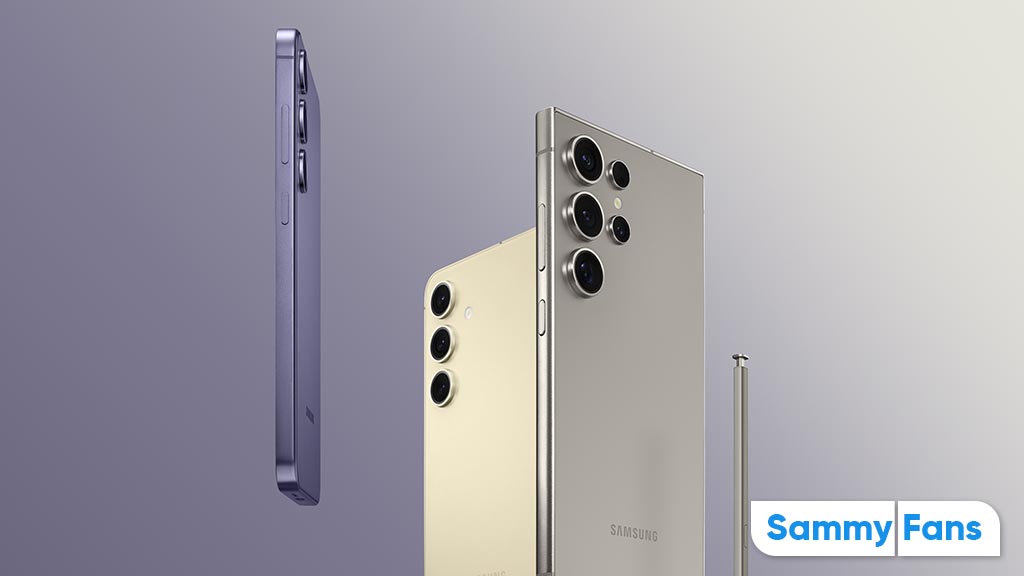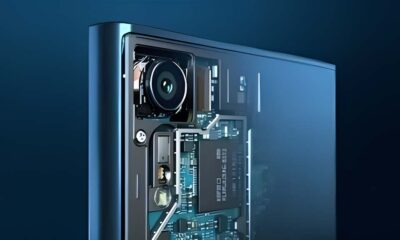News
Samsung Galaxy S25 to offer 7 years of One UI software updates: Will you use it for that long?

I have been using Samsung Galaxy phones since they all ran on TouchWiz. Later, the company moved to the One UI custom skin, which is based on Android OS.
Initially, Samsung started giving up to 2 years of major OS updates and 3 years of security patches. This policy was changed in 2020 to 3 major OS updates and 4 years of security patches, starting with the Galaxy S20 series, and later extended to other flagship devices, including the Galaxy Note 20 and Z series. Samsung then increased this to 4 years of major One UI software updates and 5 years of security patches for Galaxy S, Note, Z, A, XCover, and Tab series devices launched in 2019 or later.
From 2024, Samsung surpassed every other player in the smartphone market by providing up to 7 years of support including major OS and regular security patches. It is applicable for all the flagship smartphones launched in 2024 or later.
Now, why this history tour? Let me tell you the reason. Samsung is preparing to introduce the Galaxy S25 series next year, which is rumored for late January 2025. The S25 trio will support up to 7 years of One UI software support, as officially confirmed by Samsung at SDC 2024.
Samsung’s promise not only extends the life of the Galaxy smartphone but also ensures that your device is up to date with the latest features and regular security patches. But the real question for many users is, “Will you actually use the Galaxy S25 for that long period?”
Let’s dive into the details.
With One UI software updates, you will not only get regular security patches; you will also be receiving improvements that can transform your device’s user experience. From smarter battery management to more intuitive interfaces, One UI updates ensure that your Galaxy device, whether it’s the latest model or an older one, stays fresh and capable.
Latest Samsung Galaxy phones, especially the Galaxy S series, are built with top-tier materials and hardware inside. These phones are built to last, not just in physical durability, but also in performance capability. The promise of longer software support means it can do new things and work better, even after you have had it for years.
This will be the case with the Galaxy S25 series. The upcoming device is expected to be powered by cutting-edge processors, Qualcomm Snapdragon 8 Elite, capable of running smoothly for years. There’s a rumor that the device will be packed with 16GB of RAM for better performance.
Over the years, the regular updates will improve the software to run more smoothly on the existing hardware, potentially making the device feel faster than when you first got it.
With such extended support, you could keep using your Galaxy S25 for a much longer time, reducing the need for frequent upgrades. It’s a smart move for anyone looking to save money.
This is where it becomes a personal choice: Do you see yourself sticking with the Galaxy S25 for 7 years?
From my perspective, if you are someone who loves the latest tech or your work requires the latest technology, you will probably upgrade before long. But if you’re more about practicality than having the newest thing, the Galaxy S25 could become a long-term partner.
The important point here is, smartphone batteries degrade over time. Samsung’s software updates often include battery optimization, but eventually, you might need to consider battery replacement if you want to keep the current smartphone with you for a longer time.
For durability, the Galaxy S25/Ultra will use titanium material, but even with robust build quality, some serious physical damages like broken screens, water damage, or just wanting something new might make you switch devices before the software support period ends.
There’s one more thing to consider: if you are into beta testing and love playing with new features before they are out for everyone, you might want to upgrade your phone every two to three years. That’s because Samsung usually only offers the One UI beta program to its newest models. For instance, the One UI 7.0 beta is expected to be exclusive to the Galaxy S24 and S23 series, leaving the S22 series out of the loop.

Samsung Galaxy S25 Ultra (Source – Sammyfans)
My Final View:
Samsung’s promise of 7 years of One UI software support for the Galaxy S25 is extraordinary in the smartphone industry. How long you will keep your S25 depends on things like if you love new technology/gadgets, your daily life, and how you take care of your phone.
But knowing that you can keep your Galaxy S25 up-to-date for 7 years might just change how we think about smartphone longevity. Only time will tell, but for now, Samsung’s promise is a game-changer for users looking for enduring tech solutions. I will keep the Galaxy S25 Ultra for 7 years, and my Samsung Galaxy Note9 is still on my desk, saying Hi.
Disclaimer
There is no official confirmation from Samsung on the name of the device or specifications. As with any pre-release tech speculation, actual products may differ when launched.
News
Samsung launches Gauss 2, promises faster and smarter Galaxy AI

Samsung officially unveiled the Gauss2 GenAI model at SDC24 Korea. The company’s DX Division is already using it to improve internal productivity. Samsung could utilize Gauss2 GenAI to unlock faster and smarter experiences on Galaxy AI.
Last year, Samsung debuted the first-gen Gauss2 AI model. The second-gen offers improved performance and efficiency. It can also simultaneously handle various data types as a multimodal model integrating language, code, and images.
It is available in three distinct models catered to different purposes: Compact, Balanced, and Supreme. The Korean tech giant plans to integrate it into products to deliver higher levels of convenience and personalization.
Samsung Gauss2 Models – Compact, Balanced & Supreme
Compact Model
- It delivers optimized performance for on-device usage by maximizing the utilization of the device’s computing resources.
Balanced Model
- The Balanced model focuses on achieving a balance between performance, speed, and efficiency, providing consistent performance across diverse tasks.
Supreme Model
- It aims for top-notch performance by leveraging Mixture of Experts technology atop the Balanced model.
The Balanced and Supreme models bring equal or superior performance in key metrics such as generating responses in various languages including English and Korean, and coding capabilities compared to leading open-source GenAI models.
Adding to this, the processing speed (per hour) of Balanced and Supreme models is 1.5 to 3 times faster. Faster and stable processing speed offers quicker AI response generation, reduced user wait times, and more efficient task handling.

Samsung says Gauss2 supports 9 to 14 languages as well as various programming languages. The company has integrated its stabilization techniques for training LLMs and designed a custom tokenizer to ensure maximum efficiency.
The Korean tech giant also revealed that it will continue to expand the reach of its AI-based services across all product lines. By integrating knowledge graph technology with AI, Samsung expects to provide even more enhanced personalization services.
News
Samsung invests in US-based AI semiconductor startup Enfabrica

Samsung has invested in the US-based AI (artificial intelligence) semiconductor startup, Enfabrica. The company reportedly plans to introduce the 3.2Tbps ACF SuperNIC chip and pilot systems in the first quarter of next year.
According to the information (via Reuters), Samsung Catalyst Fund (SCF) participated in the Series C funding round of $115 million recently completed by Enfabrica.
SCF joined this investment round, which was led by Spark Capital, as a new investor. Other new investors include Arm, Cisco Investments, Maverick Silicon, and VentureTech Alliance.
Following the investment, Enfabrica shared plans to strengthen R&D and move forward with mass production of its “Accelerated Computing Fabric Super Network Interface Card (NIC)” chips.
About Enfabrica
Former Broadcom and Alphabet employees founded Enfabrica in 2019. The firm develops semiconductors and software, which support the performance and scalability of AI and accelerated computing workloads.
Samsung’s investment in AI startups
Samsung Catalyst Fund has previously invested in US AI semiconductor startup DreamBig Semiconductor and Dutch AI solution startup AxelleraAI.
The consecutive investments in promising overseas AI companies are seen as efforts to secure potential clients and gain leadership in new technologies.
Enfabrica co-founder and Chief Executive Rochan Sankar told Reuters that current technologies can string together about 100,000 AI computing chips before the network starts to bog down.
News
Rumor: AMD to rival Samsung, Apple, Google, Qualcomm and MediaTek with Ryzen AI Mobile SoC

AMD could launch Ryzen AI Mobile SoC, potentially entering the smartphone application processor market. Currently, the company is known for designing and developing computer processors and graphics technologies.
SmartphoneMagazine reports that AMD could enter the Mobile SoC market with Ryzen AI. If it happens, the company will rival Apple (A Series), Samsung (Exynos), Qualcomm (Snapdragon), MediaTek (Dimensity) and Google (Tensor).
The report says that AMD is already in talks with integrators to have the forthcoming “Ryzen AI” mobile SoCs used in smartphones. It could be a significant development in the tech industry as AMD currently focuses on PC chips and drivers.
It is rumored that AMD plans to introduce “Ryzen AI” chips, similar to what is found in handheld devices. That said, the company will likely have an implementation like Phoenix, Hawk Point, and Strix Point APUs.
Starting with Exynos 2200, AMD has been integrating RDNA-based Xclipse GPU in Samsung’s flagship chipset. The Exynos 2400 also features Xclipse GPU and we’ve seen the expansion to Galaxy A55’s Exynos 1480 chipset earlier this year.
The US chip firm is allegedly setting its sights on the mobile industry and will allegedly introduce “APU-like” Ryzen AI SoCs. The company is considering mobile market entry to answer Qualcomm and MediaTek as they eye the PC market.
Apple itself designs its mobile SoCs and gets produced through TSMC. Qualcomm and MediaTek chips are widely used in Android devices. Samsung also has its own Exynos processor and Google has its Tensor for Pixel devices.
AMD’s entry into the smartphone market could mark a radical development. The chip’s performance and pricing factors will decide the heat of competition. If such things are planned, AMD may partner with a brand to ship its Ryzen AI Mobile chips.












